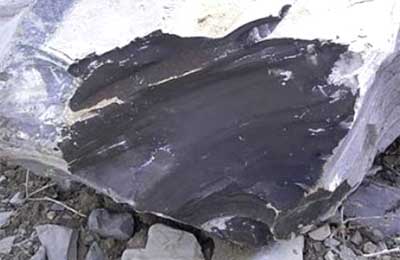
Does US shale mean cheap global oil by 2020?
, October 31, 2012
Does the rise of US shale oil mean fuel buyers can look forward to a multi-year period of crude price decline? Or is oil destined for new record highs above $150 a barrel?
The question is dividing energy analysts who are split on whether or not shale and other predominantly North American "unconventional" supply like Canadian oil sands will be enough to comfortably meet an increase in global fuel demand led by emerging markets to 2020.
That is a shift from the anguished debate back in 2008, the $147-a-barrel high water-mark for oil prices, about whether "peak oil" - the limit of global oil output - had arrived.
"Peak oilers have become almost extinct, destroyed by the arrival of new technologies with the U.S. leading the oil supply change," said David Hufton of oil brokerage PVM.
"The country with the world's highest oil demand, both volumetrically and per capita, now finds itself in the position where domestic supply growth far exceeds demand growth with every indication that this is a long term phenomenon. It is a major game changer, not just within the U.S., for the global oil and geopolitical balance."
Back in 2004, as commodity markets began their long ascent and crude waved farewell to $20 a barrel, no-one came close to predicting oil would swiftly top $100.
The lesson has not been lost on oil forecasters. Normally focused on a year or two ahead, a debate has started about where prices are heading over the next eight years to the end of the decade.
A request by Reuters for forecasts of 2020 prices drew 20 responses from consultants, banks and energy analysts. The poll produced a mean average of $118 a barrel for North Sea Brent, suggesting little change from the current level around $110.
But only five of the 20 are actually predicting prices anywhere near the mean average.
The real story is in the division between the two camps. Setting aside the demand side of the debate, the argument about supply is simple.
One camp argues that the upside from shale oil supplies will be more than enough to meet demand growth. The other disputes that, saying the likely impact from shale is being exaggerated.
Victor Shum at IHS Purvin and Gertz says that while prices need to be high enough to bring on new production, shale oil "changes the supply side of the equation".
"In 2020 we expect the world to be awash with oil as a result of booming supply and sluggish demand," said Julian Jessop of Capital Economics, also a bear on oil prices in the short-term.
Among seven analysts predicting sub-$100 a barrel, Capital is the most bearish at just $70, which would be substantially lower in 2012 prices allowing for inflation by 2020.
The top bull is Barclays Capital, $24 clear of its nearest rival with a $184 forecast for Brent. Barcap heads a group of six that put Brent at $140 a barrel or higher.
Bernstein Research sees Brent at $158 a barrel by 2020, forecasting that over the next three years shale oil will reach just 3.2 percent of global supply from 1.5 percent now.
"While it is true that shale oil has reinvigorated U.S. production, this new supply remains too small, even when combined with Canadian oil sands, to flood the global market," Bernstein said in the most substantial piece of research yet published on the issue.
JBC Energy's Michael Dei-Michei who forecasts Brent at $148.20, is also sceptical that shale will do enough to push down prices.
"While the boom in U.S. and Canadian oil production is a great thing for North America, we have seen that the rest of the non-OPEC countries have clearly underperformed, and output is lower than expected," he said, citing Brazil and Kazakhstan as examples.
For now, the market is on the side of the bears.
Volumes are thin, but the Brent market is already trading out to Dec. 2019 where it is currently priced at $91 a barrel, That's roughly the estimate many give for the commercial cost of production for marginal output at new frontiers like shale and ultra deepwater.
It's also in line with the change in forward pricing that occurred over the past 18 months as traders became aware of the rise in U.S. shale oil output.
From close to parity with $105 spot Brent in mid-2011, 5-year forward prices have fallen, barely reacting even when spot prices hit $125 this spring. 5-year forward crude is now valued just below $90 a barrel. – Reuters







